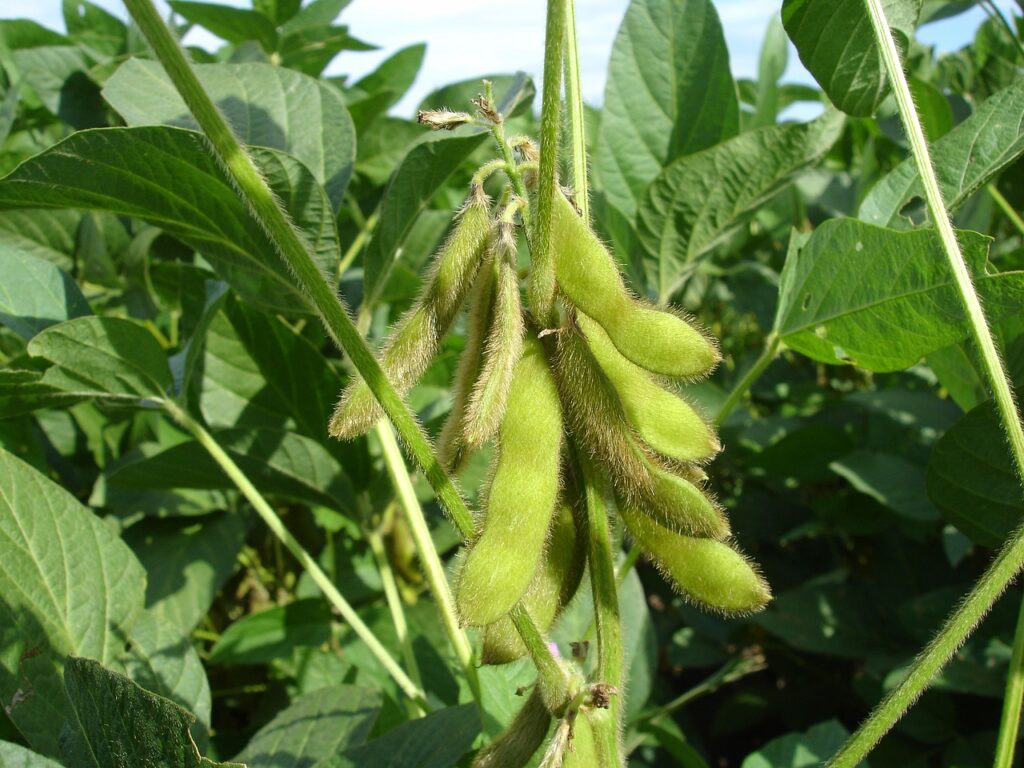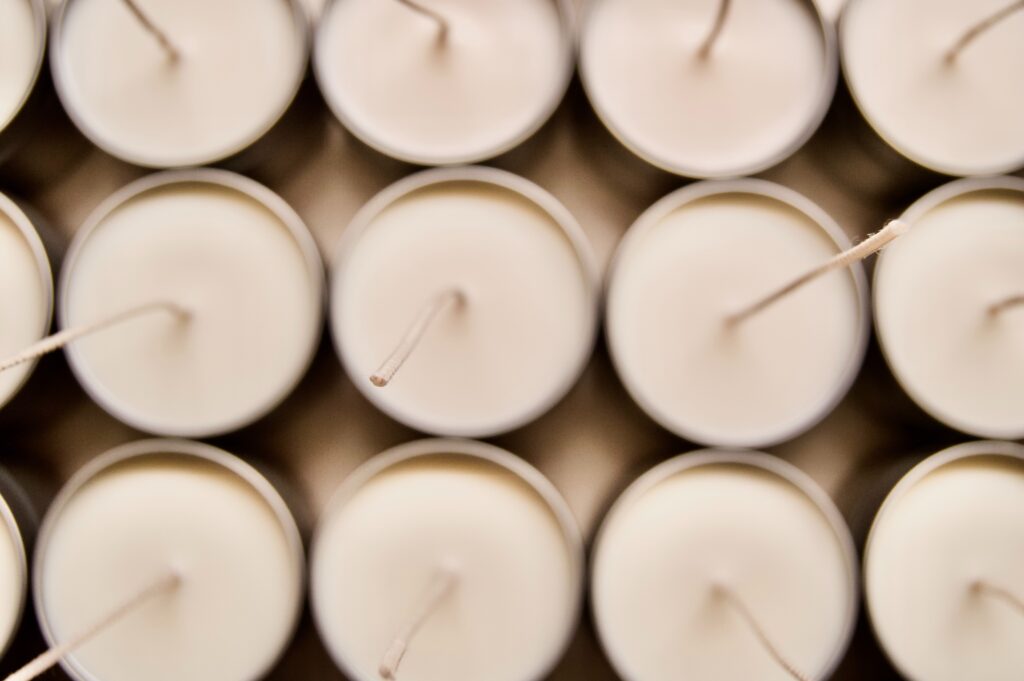Choosing the right soy wax for your candles is an important decision when it comes to the quality and performance of your final product. With many options available, it can be overwhelming to choose the right one for your specific needs.
In this article, I’ll help you with the selection of the best soy wax for your candle making needs.
Firstly, it is important to understand the different types of soy wax available in the market. Some soy waxes are designed for container candles, while others are better suited for pillar candles.
The type of soy wax you choose will depend on the type of candle you want to make.
Additionally, some soy waxes have additives that can enhance the fragrance throw or improve the appearance of your candles. Understanding the different types of soy wax and their properties will help you make an informed decision when selecting the right one for your candles.
Once you have a good understanding of the different types of soy wax available, you can start to consider other factors such as cost, sustainability, and ease of use. It is important to choose a soy wax that is affordable and sustainable, while also being easy to work with.
By taking all these factors into consideration, you can choose the right soy wax for your candles and create high-quality, long-lasting products that your customers will love.
Understanding Soy Wax
When it comes to candle making, soy wax is a popular choice due to its natural composition and sustainable sourcing. Understanding soy wax is essential in choosing the right type of wax for your candles. Here are some important things to know about soy wax:
Benefits of Soy Wax
Soy wax is made from soybeans, which are a renewable resource and biodegradable. It burns cleaner and longer than traditional paraffin wax candles, emitting less soot and toxins into the air. And its lower melting point means it burns more slowly and evenly, resulting in a longer-lasting candle.
Soy Wax Composition
Soy wax is made from hydrogenated soybean oil and a small amount of other natural ingredients such as vegetable wax and beeswax. It is important to note that not all soy waxes are created equal. Some soy waxes may contain additives or blends of other waxes that may affect the quality of your candles.
Be sure to check the label and choose a 100% soy wax for best results.
Understanding soy wax is crucial in selecting the right wax for your candle-making needs. Soy wax offers many benefits such as being a renewable resource, burning cleaner and longer, and having a lower melting point. When choosing a soy wax, make sure to select a 100% soy wax without any additives or blends for optimal results.
Types of Soy Wax
When it comes to choosing the right soy wax for your candles, it’s important to understand the different types available. Here are two common types of soy wax you can consider:
Container Soy Wax
Container soy wax is designed specifically for candles that are poured into containers, such as jars or tins. This type of wax is typically softer and has a lower melting point than other types of soy wax, which allows it to adhere to the sides of the container as it cools.
Container soy wax also tends to have a smoother finish and better scent throw than other types of soy wax. Two popular options are Golden Brands 464 and 444. GB 464 is sold in flakes and is great for beginners and more advanced candle makers (It’s the wax that I use and I’ve never had any issues with it).
Pillar Soy Wax
Pillar soy wax is designed for candles that are molded or carved, such as pillar candles or votives. This type of wax is typically harder and has a higher melting point than container soy wax, which allows it to hold its shape better.
Pillar soy wax also tends to have a more matte finish and may not have as strong of a scent throw as container soy wax. The top 2 are Blended Waxes Pillar Soy Wax (BW-921) and EcoSoya BP Pillar Soy Wax.
When choosing between container soy wax and pillar soy wax, consider the type of candle you want to create and the desired outcome. If you want a smooth finish and strong scent throw, container soy wax may be the better choice. If you want to create a molded or carved candle with a more matte finish, pillar soy wax may be the way to go.
Melting Points and Wax Behavior
Importance of Melting Point
When it comes to choosing the right soy wax for your candles, one important factor to consider is the melting point. The melting point of a wax determines how well it will hold fragrance and how long it will burn. You want a wax with a low melting point for a strong scent throw, but not so low that it burns too quickly.
Soy wax typically has an average melting point of 124 degrees Farenheit. A lower melting point means the wax will have a stronger scent throw, but it may also be softer and have a lower melt pool. A higher melting point means the wax will have a longer burn time, but may have a weaker scent throw.
Wax Shrinkage and Jar Adhesion (Wet Spots)
Soy wax can experience shrinkage and adhesion issues. Shrinkage occurs when the wax cools unevenly, causing it to contract and pull away from the container’s sides. These areas around the jar can look “wet,” so they’re called wet spots.
This is more prevalent in larger containers or when the wax is poured too hot. If it’s poured too hot, the wax will naturally shrink as it cools (science). Pouring your wax when the temperature is cooler will minimize both shrinkage and adhesion issues, ensuring a smooth and even finish for soy wax candles.
After some practice woring with soy wax, you will know how to minimize these issues and your candles will look amazing!
Wick Selection for Soy Wax
When it comes to making soy wax candles, choosing the right wick is just as important as selecting the right wax. The wick is responsible for carrying the melted wax up to the flame, and a poorly chosen wick can result in a candle that burns unevenly, produces excessive soot, or even extinguishes itself.
Here are some things to consider when selecting a wick for your soy wax candles.
Wick Size and Type
The size and type of wick you choose will depend on the diameter of your candle and the type of soy wax you are using. A wick that is too small will not be able to carry enough wax up to the flame, resulting in a weak or inconsistent burn. A wick that is too large will produce a flame that is too big, which can cause the candle to tunnel, or burn unevenly.
To determine the appropriate wick size for your candle, consult a wick size chart or use a wick testing kit. These kits typically include a range of wick sizes and types, allowing you to test each one to find the perfect match for your candle.
When it comes to wick types, there are several options to choose from, including cotton, hemp, and wood. Cotton wicks are the most common and are suitable for most soy wax candles. Hemp wicks are a good choice for larger candles or those with a higher fragrance load. Wood wicks provide a unique crackling sound and are ideal for creating a cozy atmosphere.
Testing for the Perfect Wick
Once you have selected a few wick options that are appropriate for your candle size and type of soy wax, it’s time to test them out. Observe how the candle burns, paying attention to the flame size, how quickly the wax melts, and any soot or smoke produced.
If the flame is too small, try a larger wick size and if the flame is too large, try a smaller wick size. And if the candle produces excessive soot or smoke, try a different wick type. Repeat the testing process until you find the perfect wick for your candle.
By taking the time to select the right wick for your soy wax candles and testing them thoroughly, you can ensure that your candles burn cleanly and evenly, providing a beautiful and fragrant addition to any space.
Additives and Their Effects
When it comes to soy wax candles, additives can be used to enhance the candle’s performance. Here are some common additives and their effects:
Fragrance Oils and Dye Compatibility
Adding fragrance oils to your soy wax candles can enhance their scent. However, not all fragrance oils are compatible with soy wax. It’s important to choose fragrance oils that are specifically formulated for soy wax to ensure that the scent is strong and long-lasting.
Similarly, if you want to add color to your candles, it’s important to choose dyes that are compatible with soy wax. Some dyes may not blend well with soy wax, resulting in a mottled or uneven appearance.
Stabilizers and Hardeners
Stabilizers and hardeners can be added to soy wax to improve its performance. For example, some stabilizers can help prevent the wax from frosting or discoloring. Hardeners can help the candle hold its shape and prevent it from melting too quickly.
It’s important to note that adding too much of these additives can have negative effects on the candle’s performance. It’s best to follow the manufacturer’s instructions and use additives in moderation.
Overall, additives can enhance the performance of soy wax candles, but it’s important to choose the right ones and use them in moderation. By doing so, you can create beautiful, long-lasting candles that will delight your senses.
Sourcing Soy Wax
Choosing the right soy wax makes all the difference in the quality of your final product. One of the most important factors to consider is where you source your soy wax from. Here are some things to keep in mind when evaluating potential suppliers.
Supplier Evaluation
When looking for a soy wax supplier, it’s important to do your research and choose a reputable company. Here are some factors to consider:
- Quality: Look for a supplier that offers high-quality soy wax that is free from impurities and burns cleanly.
- Price: While price is certainly a consideration, don’t let it be the only factor. Cheaper soy wax may be lower quality and result in a lower-quality final product.
- Customer service: Choose a supplier that is responsive to your questions and concerns and offers good customer service.
- Shipping: Consider shipping costs and delivery times when choosing a supplier.
By evaluating potential suppliers, you can ensure that you are using high-quality products in your candle making.
Here are 2 you can start with:
Candles and Supplies and Candle Science.
Troubleshooting Common Issues
Frosting and Wet Spots
Frosting is a common issue that can occur when using soy wax. It appears as a white, crystal-like substance on the surface of the candle. Frosting does not affect the burn quality or scent throw of the candle, only the look of it. Here are some tips to minimize frosting:
- Use a lower pouring temperature and avoid pouring in a drafty area.
- Allow the candle to cool slowly and avoid sudden temperature changes.
- Use a wax blend that is designed to minimize frosting.
Wet spots are another common issue that can occur with soy wax candles. Wet spots are areas where the wax has pulled away from the glass, leaving a visible gap. Here are some tips to minimize wet spots:
- Use a lower pouring temperature and avoid pouring in a drafty area.
- Heat the glass container before pouring the wax to minimize temperature differences.
- Use a wax blend that is designed to minimize wet spots.
Burn Quality and Scent Throw
Burn quality and scent throw are two important factors to consider when making soy wax candles. The burn quality refers to how well the candle burns. The scent throw refers to how well the candle releases its fragrance. Here are some tips to improve burn quality and scent throw:
- Use the recommended amount of fragrance oil for your wax type and container size.
- Use a wick that is appropriate for your wax type and container size.
- Let the candle cure for at least 24 hours before burning it.
- Trim the wick to 1/4 inch before each use to prevent smoking and improve burn quality.
- Burn the candle for at least two hours to ensure an even melt pool and maximum scent throw.
By following these tips, you can troubleshoot common issues that may arise when making soy wax candles.
Frequently Asked Questions
What are the differences between soy wax 444 and 464 for candle making?
Soy wax 444 and 464 are both popular choices for candle making, but they have some differences. Soy wax 444 typically has a higher melting point compared to 464. This means that candles made with 444 may withstand warmer temperatures better without melting or softening excessively.
This may be a better option for summer months if you plan to sell your candles outdoors. Ultimately, the choice between soy wax 444 and 464 comes down to personal preference and the specific needs of your candle making project.
What is the best soy wax for beginners to use in candle making?
For beginners, soy wax 464 is an excellent choice for candle making. Soy wax 464 is generally easier to work with compared to other types of wax. It has has a consistent formulation, which makes it predictable and reliable for beginner candle makers.
This consistency can help reduce the learning curve when experimenting with different candle-making techniques.
Where can I find wholesale suppliers for soy wax for candle making?
Many online retailers and local craft stores offer soy wax for candle making. You can also find wholesale suppliers by searching online or contacting candle making supply companies. Be sure to compare prices and read reviews before choosing a supplier to ensure you are getting a quality product at a fair price.
Some top suppliers include:
Tip: Try to find a supplier close to your location to save on shipping costs. Maybe you can even find one in driving distance. Good luck!



